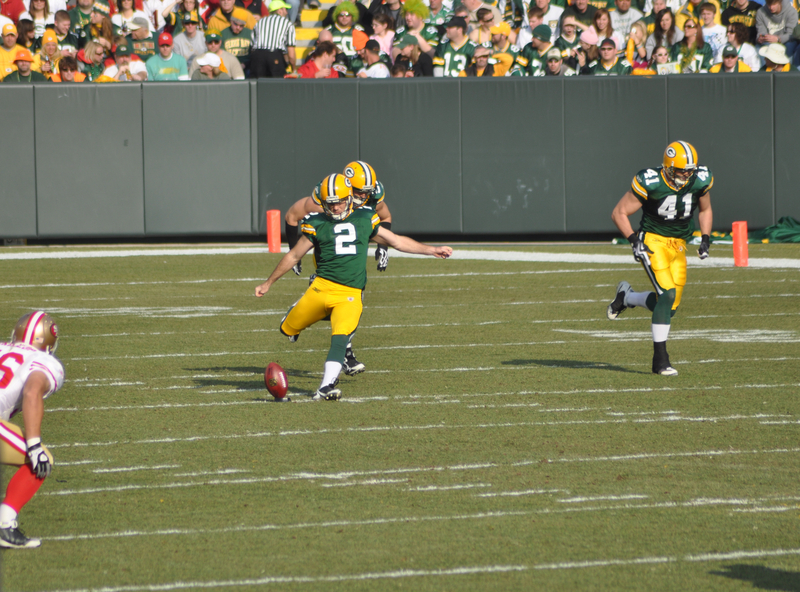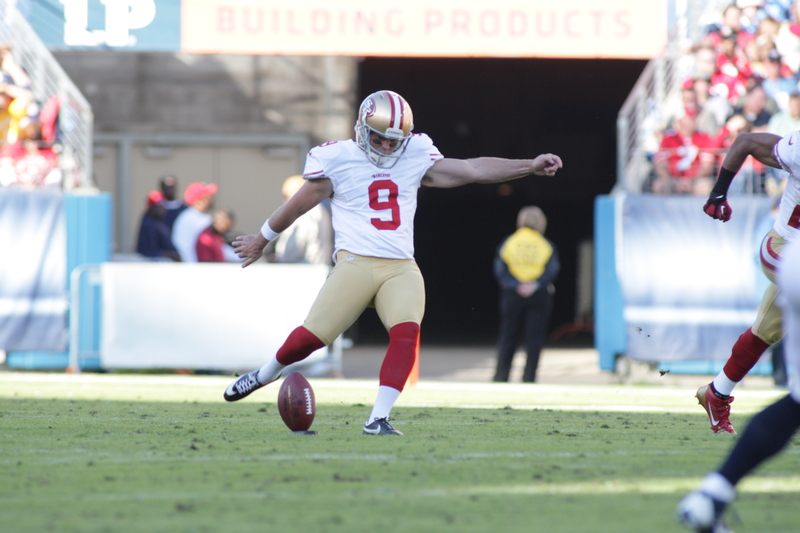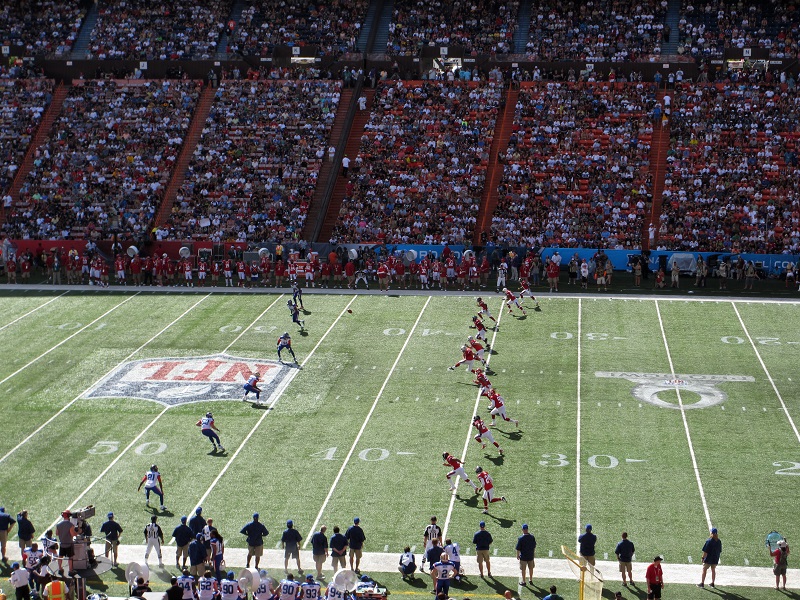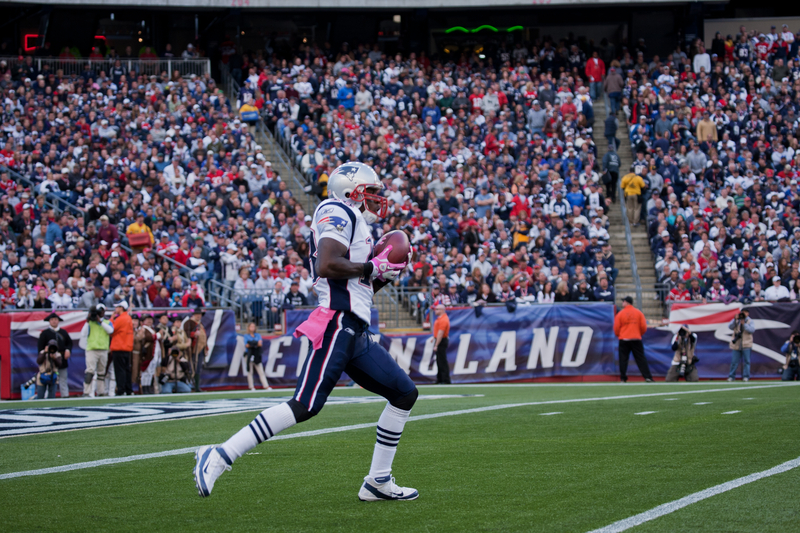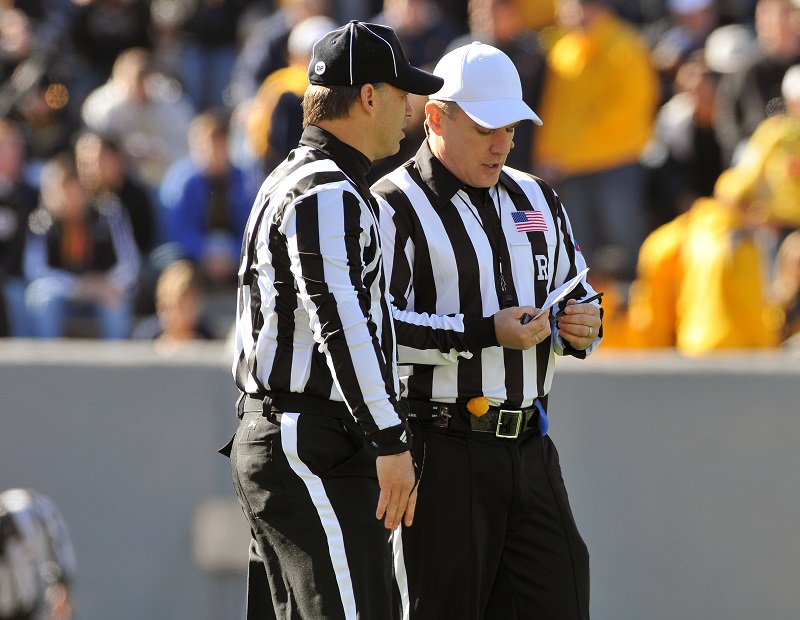Last updated on November 3rd, 2023 at 08:24 am
An onside kick in American football occurs when the kicking team purposely kicks the ball a short distance (usually kicking the ball directly into the ground to bounce) via the kickoff to the receiving team. The purpose of the onside kick is for the kicking team to recover the ball since it’s difficult for the receiving team to secure it. When done successfully, the kicking teams can give their offensive team tremendous starting possession of the first down ball, which can be necessary if there is only a short amount of time left in the game for them to score again.
If the receiving team recovers the ball, they receive an automatic first down from the recovery spot. However, the receiving team needs to have complete control of the ball to ensure they receive the first down via the kickoff. If the receiving team fumbles the ball to the defensive team, the defensive team will control the ball and have a first down.
How Successful are Onside Kicks?
According to Bleacher Report, onside kicks were successful less than 6% of the time during the 2022 season.
According to Sportingnews.com, onside kicks are not that successful in completion with the rule changes in 2018. In 2017, onside kicks had a successful completion rate of 21%, while in 2018 had a 6% completion rate. While the completion rate for onside kicks went down drastically, NFL teams can scrimmage against themselves during practices to see what can work best during games. The key to running a successful onside kick is to catch the receiving squad by surprise, if possible.
What are the Kicking Rule Changes for the NFL Onside Kick?
The new onside kick rule prevents the kicking team from stacking men on one side of the line via the kickoff. Now, kicking teams need to have five members on either side of the kicker via their lineup to recover the ball. The second new rule change is that the kicking team can’t start running for the football as the kicker is about to kick the football.
The new NFL rule changes are about keeping football players safe. For example, NFL teams in the past would load up one side of the ball and crash the receiving team on a kick to that side specifically. Having the kicking team charge and crash on the receiving team would result in more injury chances, which the NFL does not want to have.
What are the Receiving Rule Changes for the NFL Onside Kick?
Not only are there rule changes for the kicking team, but there are rule changes for the receiving team. One new NFL rule for the onside kick forces the receiving team to spread out their men on the play. Receiving teams now have eight players in a 15-yard setup zone between the kicking teams’ 45-yard and their 40-yard line. Finally, receiving teams must have three players stay towards the touchdown area. Having three players towards the touchdown area helps protect the receiving squad if there is a traditional kick and limits the number of players crashing for the ball.
Another change is that the receiving team can’t perform wedge blocks on one defensive player going for the ball. This wedge block suspension is mainly for the three receivers towards the endzone but can pertain to the traditional onside kick players. Just like for the kicking team, the NFL continues looking for ways to protect players from potential injuries.
When Do Penalties and Offsides Come into Play?
An offsides penalty can occur in a few ways during an onside kick. The first way a penalty can occur is if the kicking team kicks the ball out of bounds. Another way a penalty can happen is if the kicking team runs past the scrimmage line when running before the football passes that spot. Finally, the kicking team can’t purposely block a defender from getting the ball at any point before it crosses ten yards.
Can you Call a Fair Catch on an Onside Kick Attempt?
The fair catch rule for American Football dictates that a team can call a fair catch on a kickoff and or punt when the ball is in flight. However, during an onside kick, the kicking team is kicking the ball directly into the ground to bounce, so the football is no longer in flight. Since the onside kick has the football hit the ground via the kick, you can’t call a fair catch since the ball is not airborne anymore.
Conclusion
In summary, an onside kick is a high-risk and high-reward play that NFL teams run when they are losing, and there is not much time left on the clock. The risks are injuries and or giving the opposing team a tremendous field advantage to start their first down, but the reward is that you can regain ownership and give the ball back to your offense. While the new rules lower the chance of a successful onside kick, NFL teams can still catch a defense sleeping during a kick-off with a surprise onside kick.
Related Topics
What is the NFL Passer Rating?
NFL Teams Without Cheerleaders
What is an Audible in Football?
What is a Touchback in Football?
Football Players Taping their Arms
Why Do Football Players Wear Towels?
Greg Kristan, owner of The Stadium Reviews, LLC and TM Blast, LLC, brings his extensive experience visiting over half of the MLB ballparks, along with numerous MLS, NHL, NBA, and NFL venues, to provide in-depth coverage on the bag policy, food options, and parking. He has also been interviewed about his experiences on several sports podcasts.

